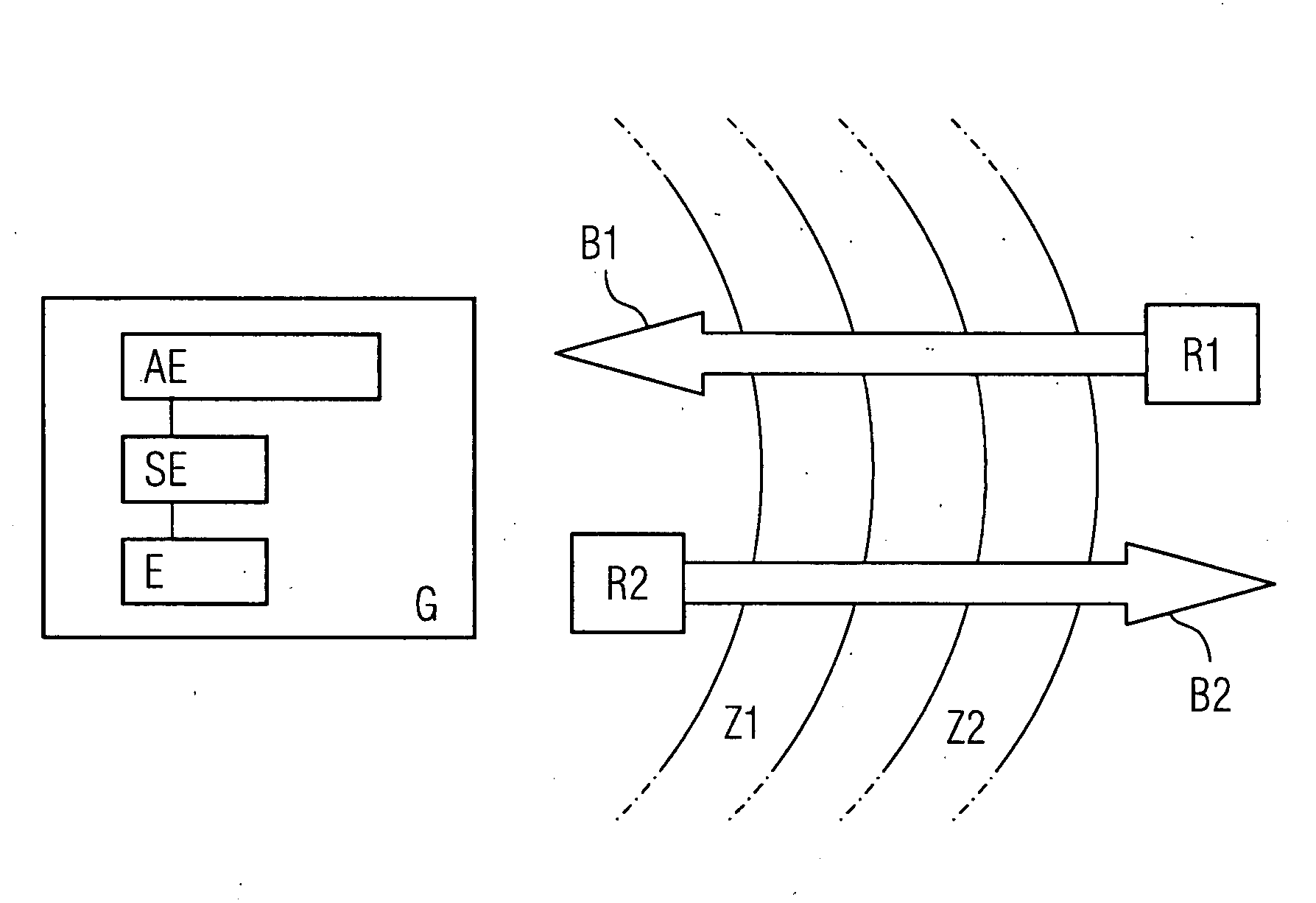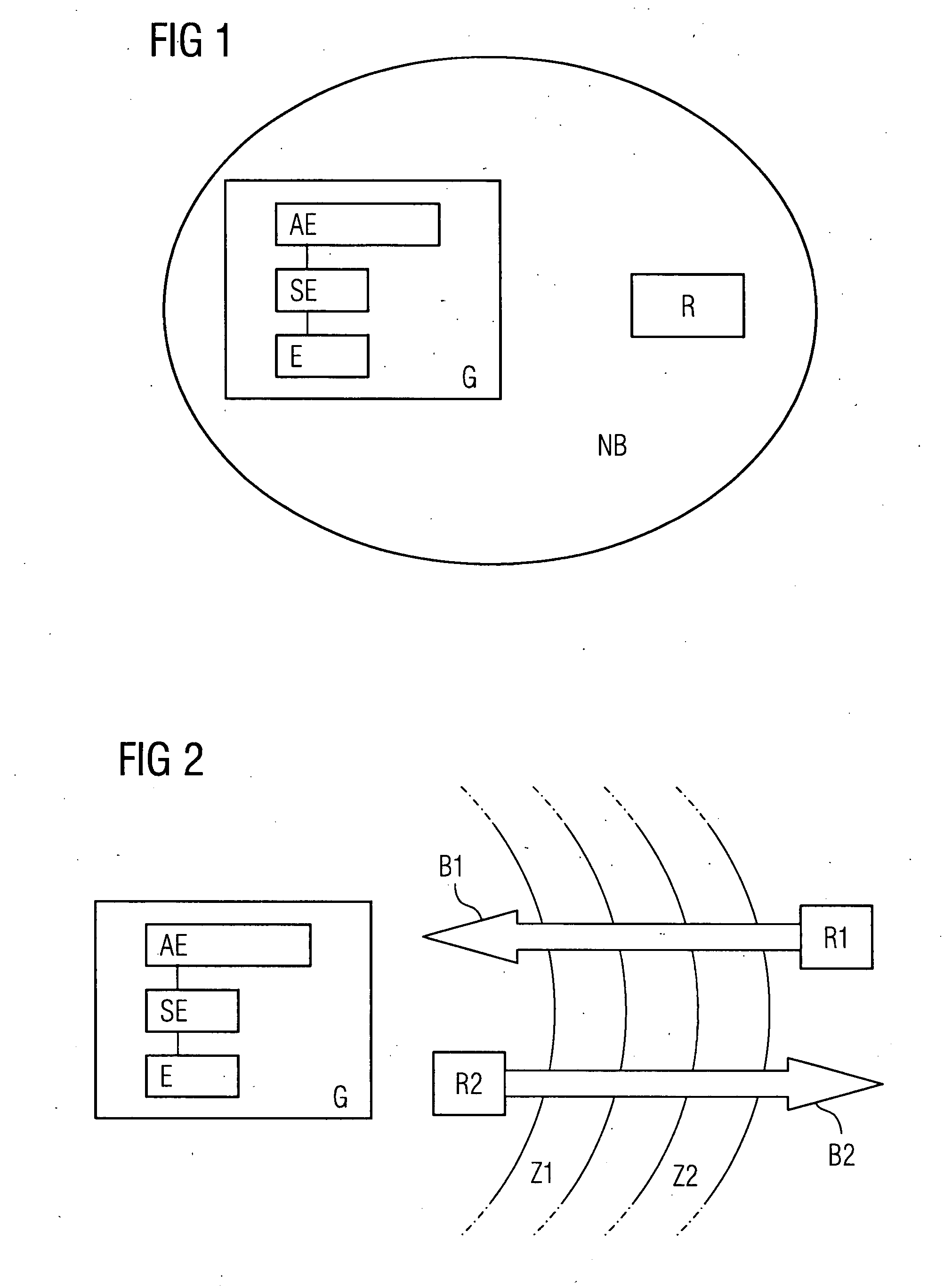Control for the display device for a communication terminal
- Summary
- Abstract
- Description
- Claims
- Application Information
AI Technical Summary
Benefits of technology
Problems solved by technology
Method used
Image
Examples
Embodiment Construction
[0028]As one example of an appliance, FIG. 1 shows a communication terminal G which has a display device AE, a control device SE and a receiver E. The near field NB of the communication terminal G is located around the communication terminal G, with the near field in this exemplary embodiment being identical to the reception area of the receiving device E. In this exemplary embodiment, the near field NB is an area with a radius of several meters around the communication terminal G, with this distance being at least as large as the maximum reading distance for the display device AE. A user who is carrying a radio-frequency identification transponder (“RFID-TAG”) R is located in the near field of the communication terminal G.
[0029]In this case, the display device AE comprises a large number of organic light-emitting diodes (so-called OLEDs) which are combined to form an alpha numeric display in a film structure. Other display devices may, of course, also be used instead of the OLED-ba...
PUM
 Login to View More
Login to View More Abstract
Description
Claims
Application Information
 Login to View More
Login to View More - R&D
- Intellectual Property
- Life Sciences
- Materials
- Tech Scout
- Unparalleled Data Quality
- Higher Quality Content
- 60% Fewer Hallucinations
Browse by: Latest US Patents, China's latest patents, Technical Efficacy Thesaurus, Application Domain, Technology Topic, Popular Technical Reports.
© 2025 PatSnap. All rights reserved.Legal|Privacy policy|Modern Slavery Act Transparency Statement|Sitemap|About US| Contact US: help@patsnap.com


